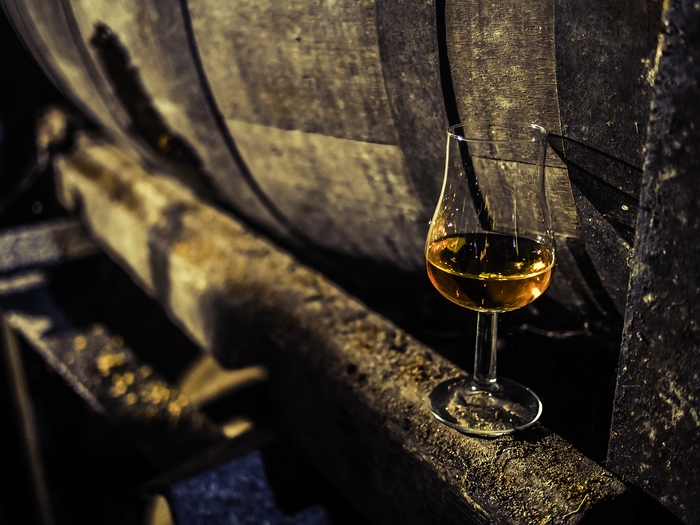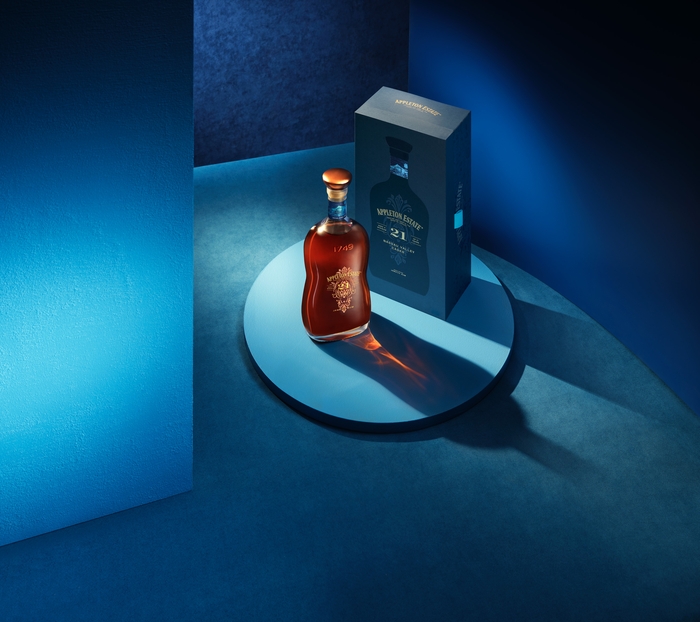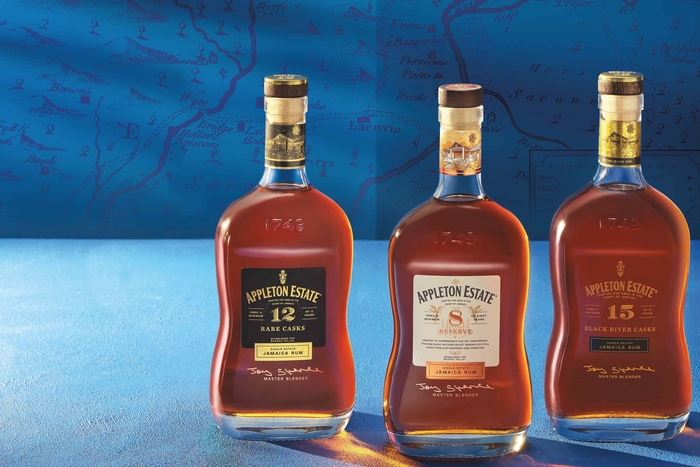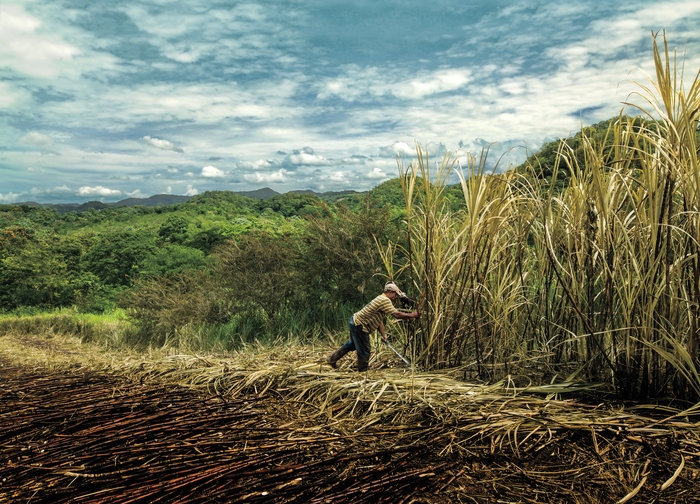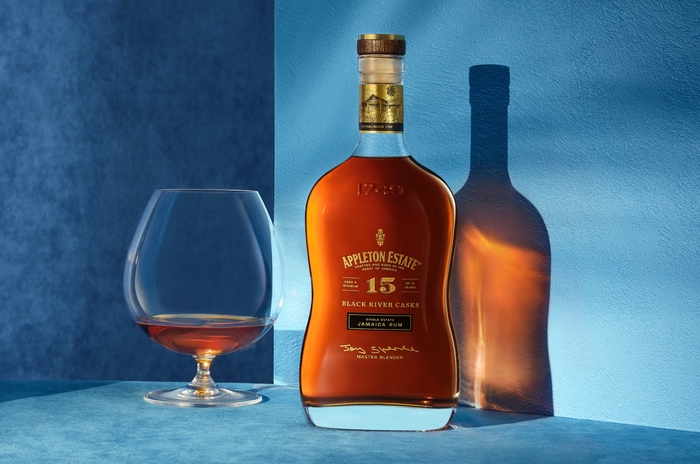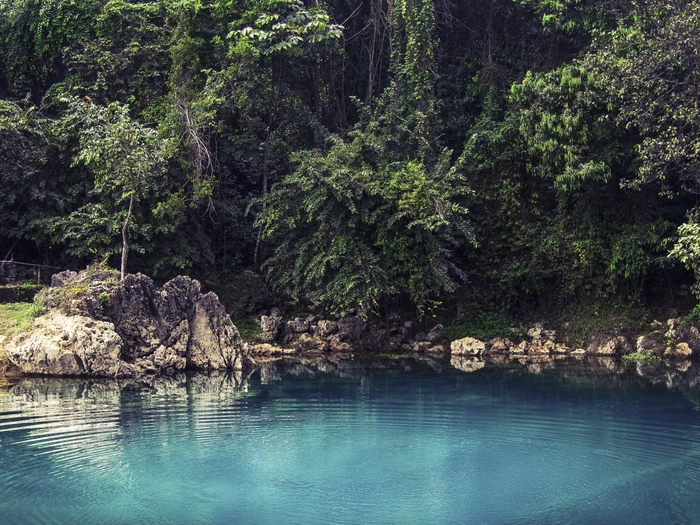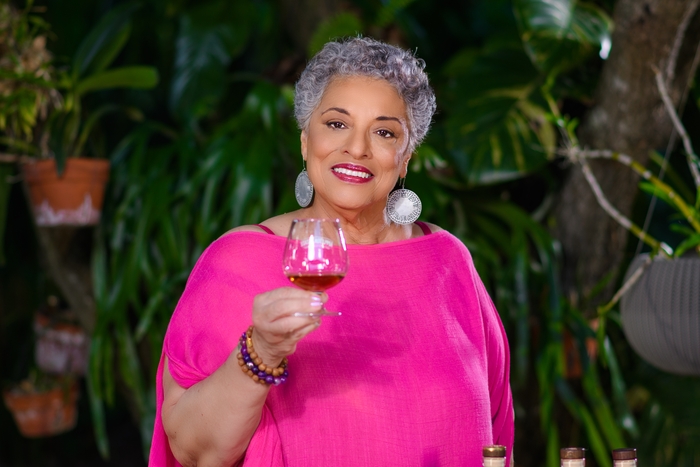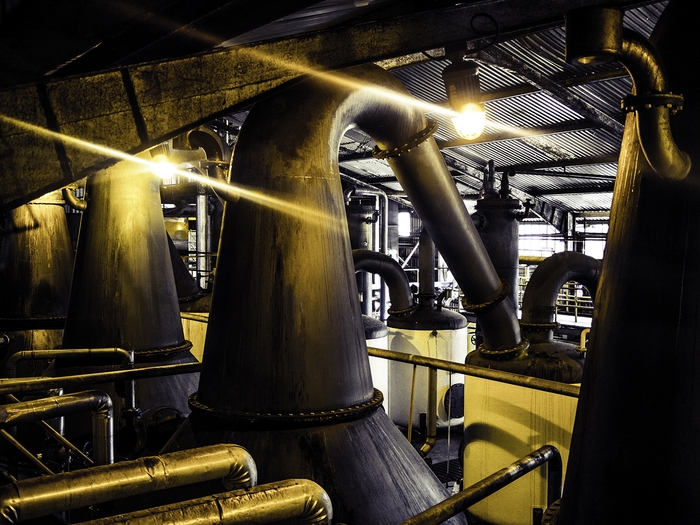
Quelques mois après la sortie de l’Appleton Estate 15 ans Black River Casks, nous avons eu la chance de parler avec Stéphane Cronier, directeur marketing de Campari France, pour avoir des nouvelles de la grande distillerie Jamaïcaine, et faire un point sur les deux dernières années, mouvementées mais riches de nouveautés. Cette interview sera également ponctuée de quelques mots de Joy Spence, illustre Master Blender de la maison. Un grand merci à toute l’équipe Campari et Appleton !
Appleton Estate a refondu sa gamme très récemment, et profite d’un engouement phénoménal pour le rhum. Savez-vous comment ce nouveau boom du rhum est arrivé ?
Il y a diverses raisons pour lesquelles Appleton connaît une belle croissance en France. Premièrement, la culture rhum est partout dans le pays, ce qui facilite les choses. La relation privilégiée que nous entretenons avec les Antilles fait que les consommateurs connaissent le rhum en tant que spiritueux de qualité.
Ensuite, nous avons observé un phénomène intéressant, un saut de génération qui fait que l’on boit rarement le même spiritueux que ses parents ou même ses grands-parents. Le rhum était tombé en désuétude pendant un moment, mais se retrouve à nouveau propulsé sur le devant de la scène avec la « génération Coca Cola », qui entre dans le rhum par le biais de produits sucrés. Appleton Estate n’est pas un rhum de ce type, mais nous désirons nous adresser à ces amateurs, qui sont passés par cette porte d’entrée. Cela se fait notamment par un travail d’éducation auprès des professionnels.
Finalement, le rhum a t’il été un spiritueux « premium », de dégustation, avant notre époque ?
Pas vraiment non, ceux qui le connaissaient bien étaient les vieux briscards qui étaient allés dans les Antilles et qui en avaient ramené dans leurs bagages, mais c’est tout. Cette émergence des rhums vieux et des « dark rums » est assez récente.
J’ai le sentiment que le style Appleton a évolué, notamment à la dégustation du 21 ans qui me semblait plus consensuel il y a une dizaine d’années.
En effet, le style Appleton évolue et a tendance à davantage marquer son identité. La distillerie développe un style propre, moins consensuel, sous l’impulsion de Joy Spence, la Master Blender. Il est bon de rappeler que ce 21 ans est un véritable compte d’âge, où 21 est l’âge du rhum le plus jeune de l’assemblage. On ne connaît pas précisément l’âge de tous les rhums qui composent le blend, tout simplement parce que différents fûts assurent sa continuité, et que les proportions évoluent en fonction de ces fûts. Ce qui est certain, c’est que ce 21 ans contient aussi des rhums bien plus vieux.
« Avec Appleton Estate Nassau Valley Casks 21 ans d’âge, nous souhaitons rendre honneur à notre domaine d’une façon moderne avec une nouvelle version, élancée et sophistiquée, de notre bouteille iconique ». « La personne avec laquelle vous le dégustez doit compter beaucoup pour vous. Beaucoup ». « Ce peut être par exemple une date anniversaire ou une occasion très spéciale. » Joy Spence
Pour faire des assemblages de rhums de 21 ans, il faut un nombre de fûts assez fou. Savez-vous combien de barriques sont actuellement en vieillissement chez Appleton ?
Aujourd’hui il y a à peu près 200 000 fûts en vieillissement. Il semblerait que ce soit l’une des plus vastes collections au monde.
Est-ce qu’il y a une politique de rotation, de remplacement des fûts au fur et à mesure ?
Les fûts Appleton sont des fûts de deuxième remplissage appellés « Number One Select », ayant contenu uniquement du bourbon. C’est notre marque de fabrique. Le bourbon Wild Turkey fait partie du groupe Campari, donc il y a évidemment des fûts qui viennent de cette distillerie. Maintenant, d’une part, tous les fûts de Wild Turkey ne vont pas chez Appleton, et d’autre part, dans l’art du vieillissement et de l’assemblage, il est intéressant d’avoir des fûts qui proviennent de plein de distilleries différentes. Et puis il peut y avoir des variations de disponibilités, de prix, en fonction d’un besoin à un certain moment, etc. C’est un gros business, quand on considère le prix des fûts aujourd’hui, donc le fait d’être dans le même groupe permet de sécuriser dans une certaine mesure, mais ce n’est pas suffisant.
Actuellement la demande est forte et les contraintes le sont aussi, parvenez-vous à suivre cette demande ?
Cela dépend des produits. Nous avons un stock incroyable de rhums précieux, mais comme toute marque, sur les qualités très âgées, nous sommes très contingentés. Sur les qualités plus accessibles comme l’Appleton Signature ou l’Appleton 8 ans, nous sommes capables de fournir. Aujourd’hui, les problématiques que nous avons ne sont pas des problématiques de production, mais plutôt de logistique. Ce sont les conséquences du Covid dans un premier temps, et de la crise ukrainienne. Il y a de grosses tensions sur le transport, et sur les matières sèches comme la verrerie. C’est un véritable casse-tête.
Comme vous le savez, pour faire du verre, il faut de la silice. Le plus gros de la silice vient de Chine, donc cela a déjà été compliqué pendant le covid. Ensuite, il faut également beaucoup de gaz car il faut chauffer très fort. Une partie des producteurs de verre se trouvent en Russie ou en Ukraine, et sont à l’arrêt actuellement. Les ruptures qui interviennent en ce moment sur le marché ne sont pas dues à des problèmes de liquide, mais réellement à des problèmes d’embouteillage.
Donc on essaie de faire au mieux. Sur les qualités d’entrée dans la marque, nous y arrivons à peu près. Et puis sur les qualités rares, de toute façon, c’était déjà le cas avant, par définition. Sur les éditions très limitées, ce sont des allocations, l’offre et la demande font que l’on ne peut les proposer qu’à quelques clients cavistes.
Combien de bouteilles la distillerie Appleton Estate produit-elle chaque année ?
Nous ne pouvons pas malheureusement vous communiquer nos chiffres internes pour des raisons de confidentialité. Néanmoins, nous pouvons vous fournir les derniers chiffres de l’IWSR (International Wines & Spirits Record) 2020 :
– Volume total monde IWSR 2020 : 37 156 hectolitres
– Appleton Estate Signature : 92% du volume total
– Appleton Estate 8 ans Reserve : 4.3% du volume total
– Appleton Estate 12 ans Rare Casks : 3.3% du volume total
Les références plus âgées (15 ans Black River Casks, 21 ans Nassau Valley Casks, éditions limitées) représentent environ 0.4% du volume total de la marque.
En parlant d’éditions plus âgées et limitées, lorsque l’on regarde l’Appleton 21, on constate que son prix est resté bas, ou en tout cas n’a pas suivi l’augmentation générale des très vieux rhums. Donc on imagine que la demande est de plus en plus forte sur ce produit en particulier…
Tout à fait, mais là où l’on a eu un succès ultra rapide, c’est avec le lancement de la gamme Hearts Collection. La première série (1994 – 1995 – 1999) est partie en quelques jours. Je me souviens très bien du moment où nous avions fait les prévisions de vente pour la France, et nous n’aurions jamais prévu cela. Bien sûr l’effet Velier est aussi passé par là.
Pour la deuxième série, avec le 1984 et le 2003 lancés l’année dernière, cela a été pareil. Nous avons été en rupture très très vite. Cette collection est vraiment une belle réussite.
Pourtant en France, Appleton n’est pas très connue du grand public…
Oui, l’identité de la marque n’y est pas très forte. Elle a vivoté pendant quelques années, puis la relance des années 2020 avec la nouvelle bouteille et un certain nombre d’innovations font qu’elle est de plus en plus présente. Aujourd’hui, au niveau français, cela reste une petite marque en termes de volumes, mais c’est une marque de connaisseurs.
J’ai l’impression que pour le grand public, en grande distribution notamment, on trouve soit des rhums agricoles, soit des rhums « latinos ». Il y a encore une place à prendre pour les rhums de tradition anglaise.
Exactement, nous y travaillons justement. Il s’agit d’un travail commercial, de distribution. Le fait que désormais nous (Campari, ndlr) ayons un vrai portefeuille de rhums, avec Trois Rivières, La Mauny et Appleton, permet d’avoir des synergies commerciales. De manière indirecte, Appleton doit profiter de la force de frappe de Trois Rivières et Maison La Mauny.
C’est drôle car au départ on pourrait croire l’inverse.
Oui ! Mais Trois Rivières en France, cela représente plus d’un million et demi de litres. Cela fait partie des grosses marques de rhum agricole, donc c’est une locomotive. Cela permet aussi d’augmenter la distribution d’Appleton, et c’est là qu’il est intéressant d’avoir un portefeuille qui puisse toucher à plusieurs styles, à plusieurs origines géographiques. En tout cas, nous cochons déjà deux styles !
Il y a un travail de prescription, d’éducation. C’est ce que nous faisons avec Joy auprès des professionnels, des blogs, des influenceurs, pour faire connaître cette marque. Nous voulons faire savoir que la Jamaïque est une terre de rhum, pas seulement pour les amateurs éclairés.
Appleton est une distillerie assez exceptionnelle, avec Joy Spence a été la première femme Master Blender. Il y a un travail aussi bien de pot-stills que de colonnes, un style propre, une histoire. Sur le marché français, nous avons un très gros travail de notoriété à faire, mais nous progressons année après année.
Quel a été l’effet du Covid pour Appleton Estate ?
Pour voir positivement les choses, cela nous a permis de « recruter » beaucoup de nouveaux clients. Début 2020, nous étions en plein positionnement de la marque, avec de nouvelles bouteilles, de nouvelles expressions, mais cela ne nous a pas freinés, bien au contraire. Nous en avons profité pour retravailler notre communication, développer de nouveaux contenus via les différentes plateformes et réseaux sociaux. Il y a eu d’un côté des sessions éducatives, des masterclasses, et puis d’un autre, les cocktails à domicile. Il a fallu faire preuve d’ingéniosité pour relayer de nouveaux messages aux consommateurs. C’est d’ailleurs quelque chose qui n’était pas fait auparavant sur Appleton, même au niveau mondial. Donc il y a eu un phénomène d’accélération.
En résumé, le Covid n’a pas freiné la capacité d’innovation de la distillerie. C’est primordial, car c’est un élément clé sur ce marché. Les connaisseurs recherchent régulièrement des nouveautés, de nouveaux finishes, de nouveaux assemblages, de nouveaux comptes d’âge. À aucun moment nous n’avons freiné ces innovations. Le lancement de l’Appleton 15 ans Black River Casks en est la preuve.
« Pour le 15 ans d’âge, notre choix s’est porté sur un assemblage rare de rhums issus d’alambics pot-still et à colonne pour une finale corsée », « Ses notes délicatement épicées évoluant vers des arômes boisés subtilement fruités reflètent la luxuriance et la fertilité des terres traversées par la Black River dans la vallée de Nassau. » Joy Spence
Nous avons un peu perdu la notion du temps ces deux dernières années, mais ces lancements ont donné un certain rythme. Nous sommes sur une dynamique qui va continuer. On ne peut rien dévoiler pour l’instant, mais cela va continuer.
La Hearts Collection n’est peut-être pas finie…
Peut-être pas, ce serait dommage de s’arrêter en si bon chemin ! Il y a d’autres choses dans les tiroirs, mais surtout dans les chais et dans la tête de Joy. Cette politique d’innovation est clairement ancrée dans la stratégie d’Appleton.
Comment Appleton se fournit-elle en mélasse ?
Nous cultivons plus de 10 variétés de canne sur à peu près 11 000 hectares. Avec 300 agriculteurs partenaires, nous contrôlons l’ensemble de notre approvisionnement en mélasse, nous sommes 100 % autonomes.
« Nous produisons tous les ingrédients qui rentrent dans la composition de notre rhum ». « De la canne à sucre que nous cultivons nous-mêmes à l’eau filtrée par le calcaire de notre source, chaque étape est suivie avec le plus grand soin pour offrir ce superbe rhum. » Joy Spence
Pouvez-vous nous parler du processus d’assemblage ?
Les fûts sont assemblés en cuves et le rhum se repose durant quelques semaines, voire quelques mois en cuve. Pour les assemblages les plus anciens, la recette évolue sans cesse. Le nombre de fûts est naturellement plus petit, donc le profil de l’assemblage est plus complexe à maintenir.
La réduction se fait à l’aide d’une eau très pure, puisée d’un étang alimenté par la Black River qui coule dans la vallée de Nassau.
« Kingston peut subir une forte sécheresse, mais dès que vous arrivez sur cette colline, vous avez l’impression de vivre une utopie » Joy Spence, en parlant de la Nassau Valley.
Est-ce que les rhums de colonne et de pot-till sont vieillis séparément, où sont-ils assemblés en fût, « Blended in the barrel » ?
Les rhums Appleton Estate sont vieillis séparément à la suite de la distillation. L’assemblage est réalisé seulement avant la mise en bouteille.
